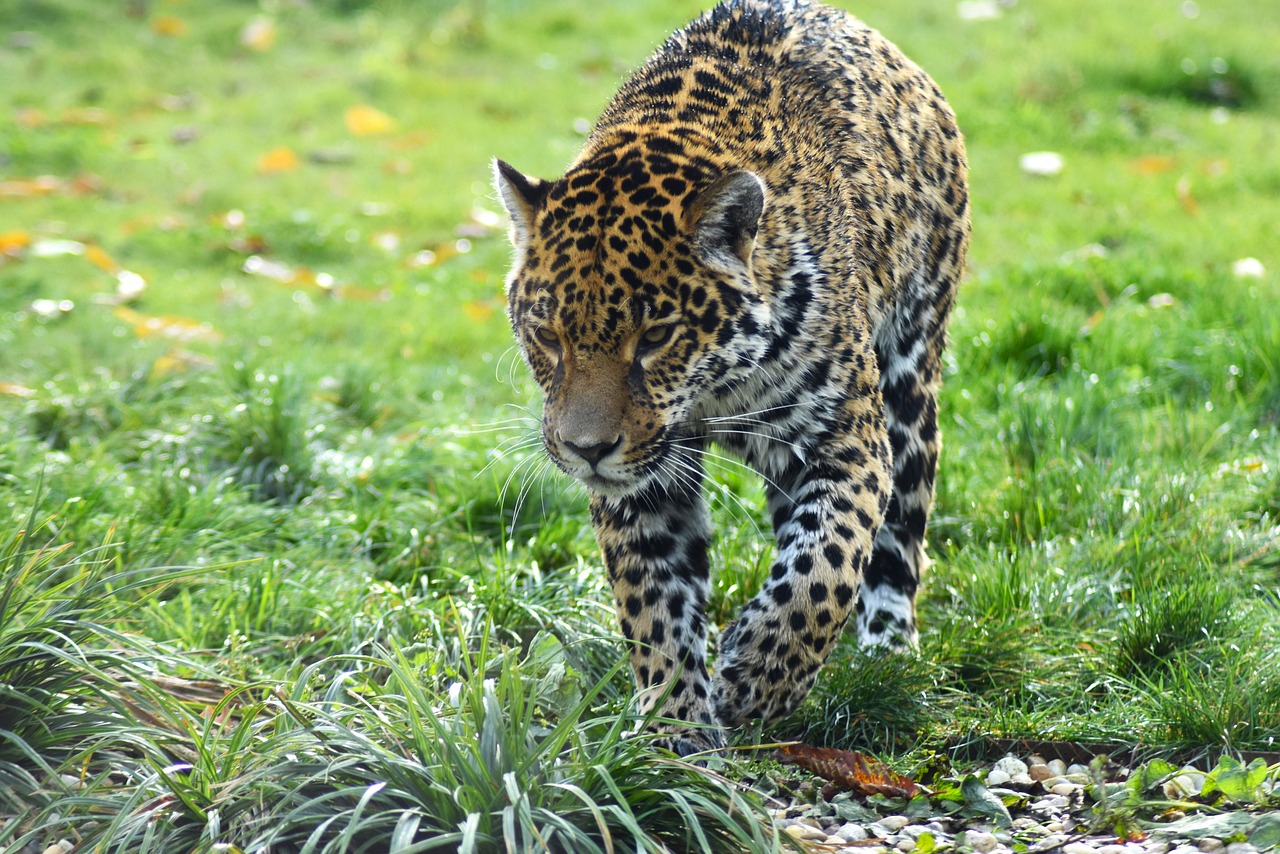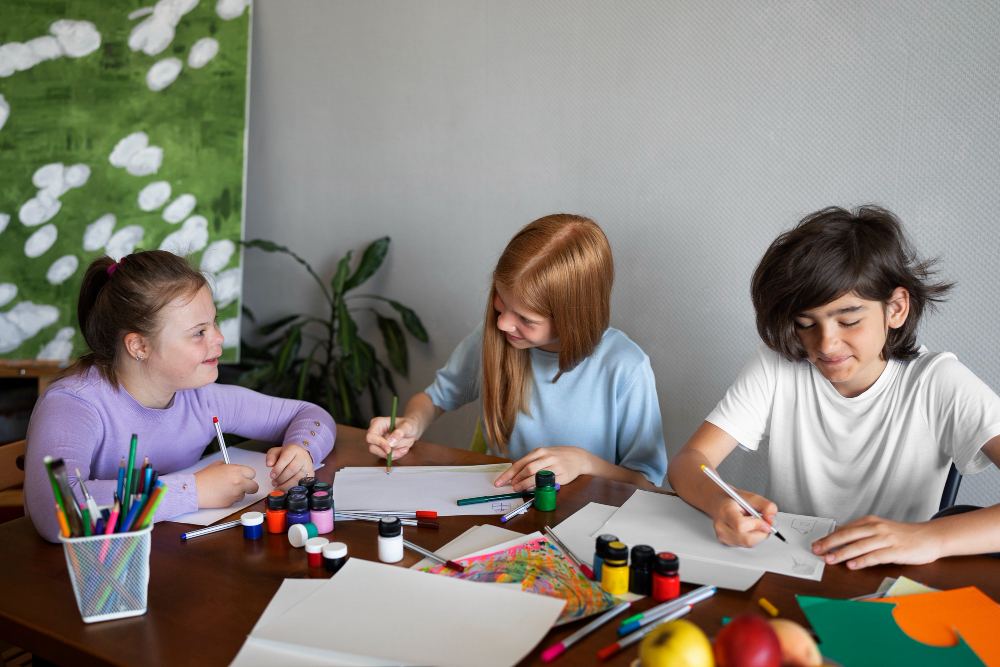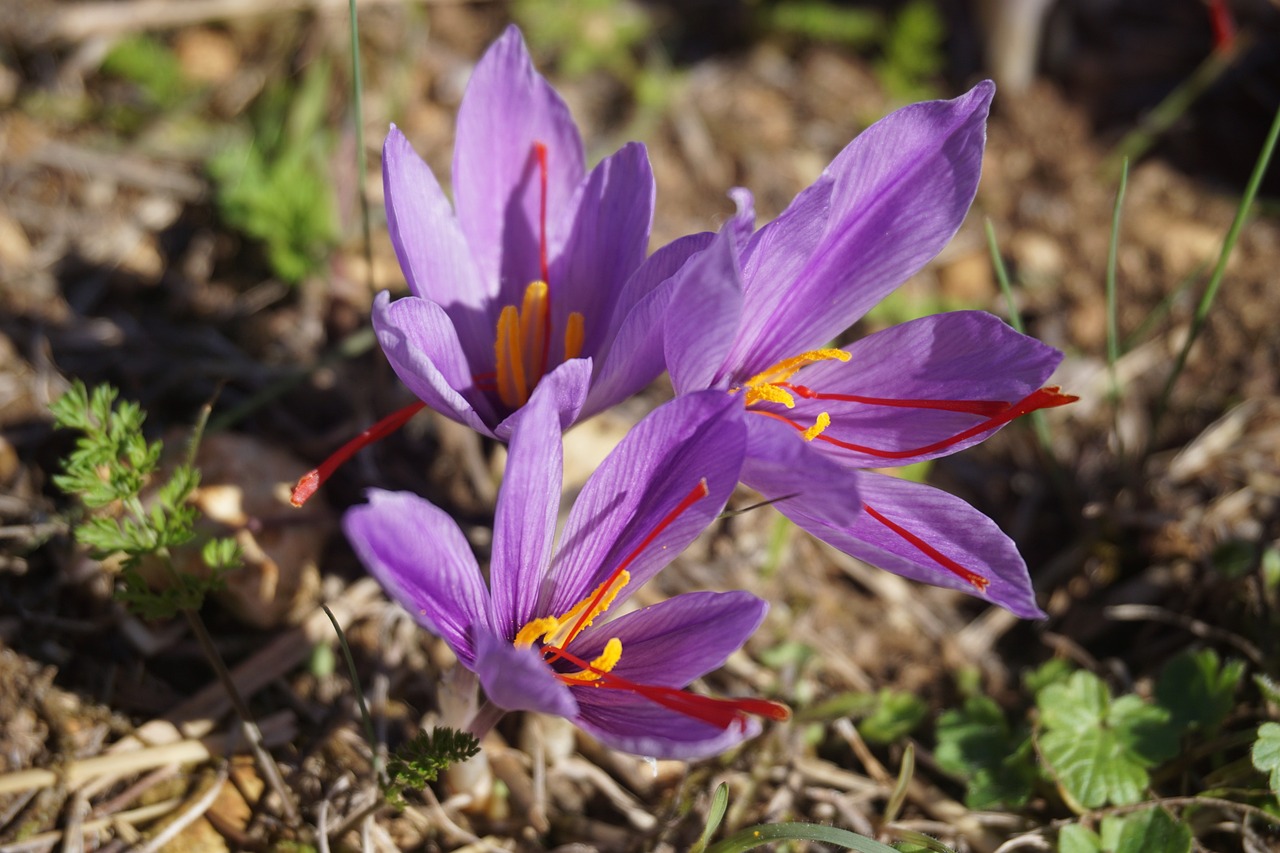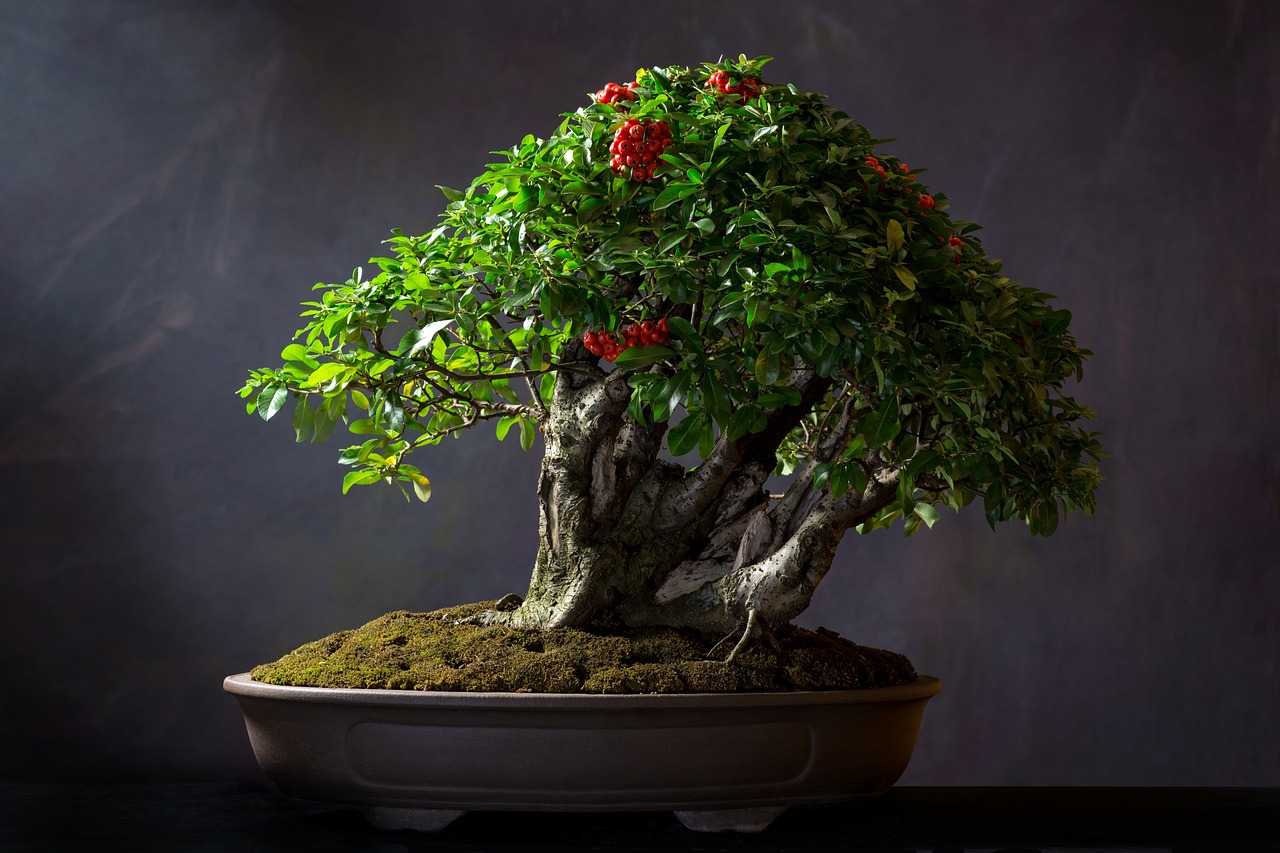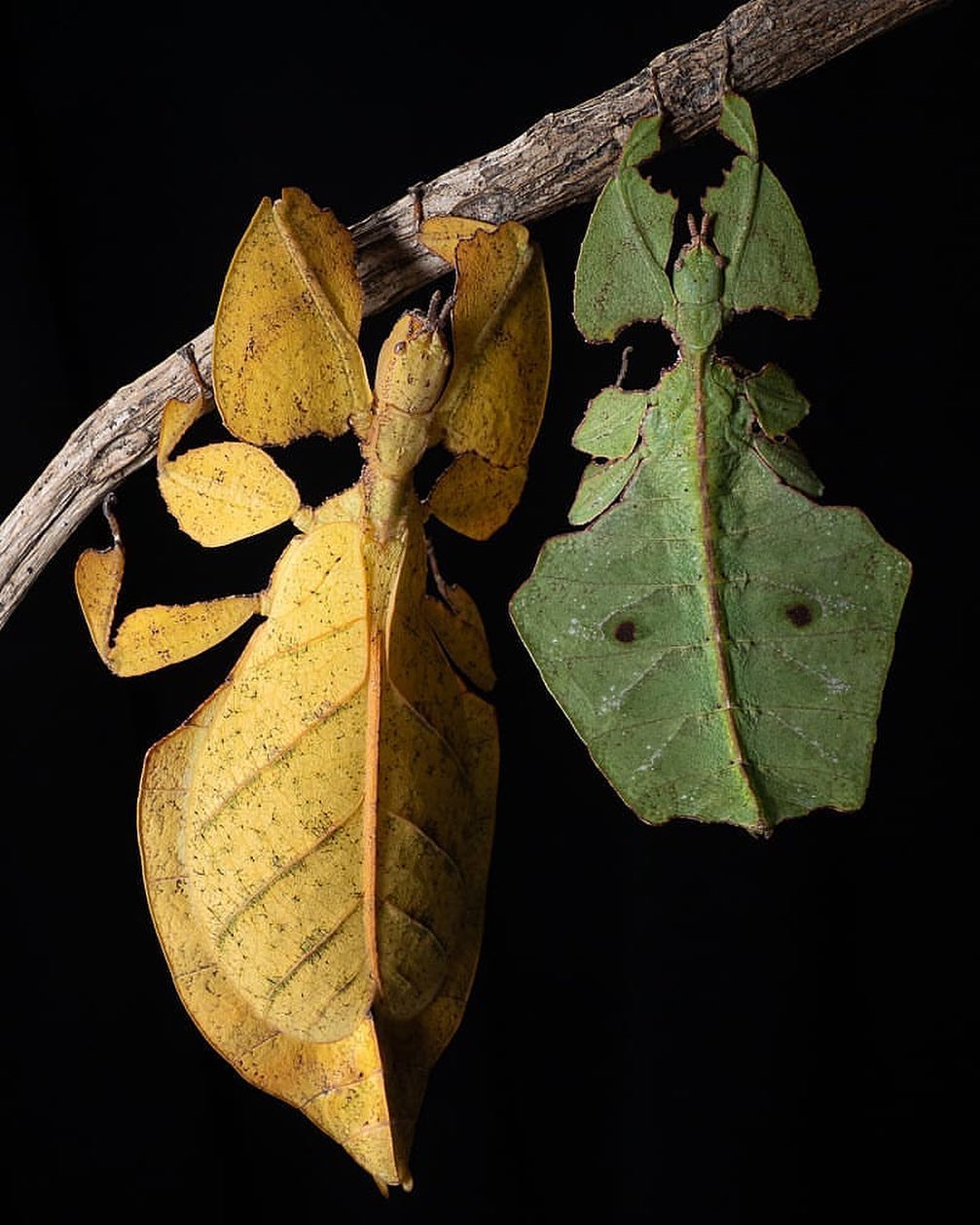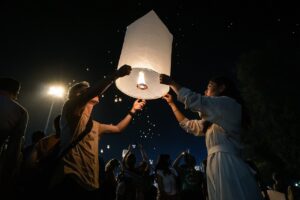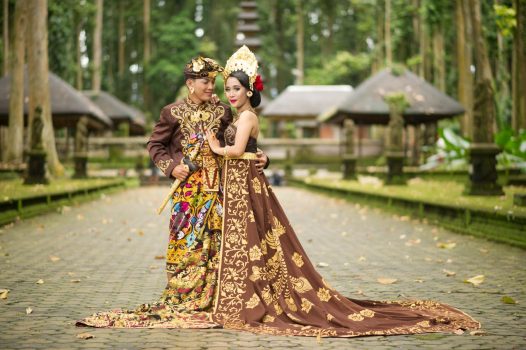 Pin
Pin Photo by I Gede Karsa
Love knows no boundaries, but the ways we celebrate it certainly do. Across continents and cultures, couples have developed extraordinary rituals that transform simple “I do” moments into magical celebrations filled with meaning, symbolism, and community spirit. These wedding traditions tell stories that go far beyond romance – they reveal how different societies view family, spirituality, prosperity, and the sacred bond between two people.
While modern weddings often follow similar patterns worldwide, traditional ceremonies showcase the incredible diversity of human creativity and cultural values. Some cultures break dishes for good luck, others share sake in sacred temples, and still others crown their brides like royalty for a day. Each tradition carries wisdom passed down through generations, teaching us that marriage is not just about individual happiness, but about creating connections that strengthen entire communities.
These customs remind us that wedding ceremonies are more than pretty decorations and fancy clothes – they’re powerful rituals that help couples transition from single life to married partnership while honoring their cultural heritage. Whether it’s the matrilineal marriages of Meghalaya or the coin exchanges of Mexico, each tradition offers valuable insights into what makes relationships strong, families united, and communities thriving.
Today’s couples increasingly draw inspiration from these global traditions, creating personalized ceremonies that blend old wisdom with new dreams. By exploring how different cultures celebrate love, we gain a deeper appreciation for the universal human desire to mark life’s most important moments with beauty, meaning, and joy.
Table of Contents
The Matrilineal Marvel of Meghalaya - Where Brides Lead the Way 🌸
The rolling hills of Meghalaya hide a beautiful secret that turns traditional wedding customs upside down. In this northeastern Indian state, the Khasi tribe practices a matrilineal system where women hold the family name and property passes through female lineage. This unique marriage tradition from different countries and regions creates a wedding celebration unlike anywhere else in the world.
The bride’s family takes center stage during these ceremonies, with the youngest daughter inheriting the family home and becoming the keeper of traditions. Wedding preparations begin months in advance, with the bride’s mother and sisters weaving intricate traditional garments called “jainsem” using golden threads. The entire village participates in creating a festival atmosphere that can last for several days.
The groom literally moves into the bride’s family home after marriage, becoming part of her clan rather than the other way around. This reversal of typical gender roles creates a society where women are naturally empowered and respected. The wedding feast features local delicacies like jadoh (rice cooked with pork) and tungrymbai (fermented soybean curry), prepared by the bride’s extended family as a symbol of welcoming their new son-in-law into their lineage.
Scottish Handfasting - The Original Trial Marriage 🏴
Deep in the Scottish Highlands, couples once practiced a wedding tradition that would shock modern society. Handfasting allowed couples to live together for a year and a day before deciding if they wanted a permanent marriage. This ancient Celtic custom gave birth to the phrase “tying the knot,” as couples would literally bind their hands together with rope or cloth during the ceremony.
The ritual took place at stone circles or sacred groves, with a druid or village elder officiating the binding ceremony. Couples would declare their intentions while their hands were wrapped together, creating a temporary but meaningful union. The community would celebrate with music, dancing, and feasting, treating the handfasted couple as officially married during their trial period.
After the year passed, couples could choose to separate without any social stigma or legal complications. Those who decided to stay together would have a formal church wedding, making their union permanent. This practical approach to marriage recognized that love needs time to grow and flourish, giving couples the freedom to make informed decisions about their future together.
Chinese Tea Ceremony - Honoring Ancestors Through Sacred Sips 🍵
The delicate clink of porcelain cups echoes through Chinese wedding halls as couples perform one of the most meaningful rituals in their culture. The tea ceremony serves as a bridge between past and present, allowing newlyweds to honor their ancestors while officially joining two families together. This ancient practice transforms simple tea leaves into a sacred bond that transcends generations.
The bride and groom kneel before their parents and grandparents, offering cups of perfectly brewed tea as a sign of respect and gratitude. Each sip represents acceptance, with the elders blessing the union by drinking the tea and offering red envelopes filled with money and gold jewelry. The ceremony follows strict protocols, with the couple serving tea in order of age and family hierarchy, ensuring every relative feels valued and included.
Red dates and lotus seeds often float in the tea, symbolizing fertility and harmony in the marriage. The couple wears traditional red wedding attire, with the bride’s qipao (cheongsam) featuring intricate phoenix embroidery while the groom dons a matching jacket with dragon motifs. This beautiful ritual creates lasting memories while strengthening family bonds that will support the couple throughout their married life.
Indian Saptapadi - Seven Steps to Eternal Love
The sacred fire crackles as Hindu couples take seven deliberate steps around the holy flame, each step representing a lifelong promise that will guide their marriage. The Saptapadi ceremony transforms a simple walk into a spiritual journey where two souls pledge to support each other through life’s joys and challenges. This ancient Vedic tradition creates an unbreakable bond that extends beyond death itself.
Each step carries profound meaning, starting with prayers for nourishment and ending with promises of eternal friendship. The couple recites Sanskrit verses while taking each step, with the first step asking for food and prosperity, the second for strength and health, and the third for spiritual growth. The fourth step seeks happiness and harmony, the fifth requests children and family, while the sixth asks for seasonal joy and good fortune throughout their lives.
The seventh and final step seals their friendship forever, making them companions for all future lifetimes according to Hindu beliefs. Family members shower the couple with flower petals and rice grains after completing the circle, celebrating the moment when two individuals become one unified spirit. The fire serves as a divine witness, ensuring the gods bless this sacred union with love, prosperity, and eternal happiness.
German Polterabend - Breaking Dishes for Good Luck 🍽️💥
The sound of shattering porcelain fills the air as German couples prepare for marriage through one of Europe’s most boisterous pre-wedding traditions. Polterabend, literally meaning “rumble evening,” brings together friends and family for an evening of controlled chaos where breaking dishes supposedly brings good fortune to the engaged couple. This centuries-old custom proves that sometimes destruction leads to construction of something beautiful.
Guests arrive with bags full of old plates, cups, and ceramic items, ready to hurl them at the couple’s doorstep or designated breaking area. The louder the crash, the better the luck, according to German folklore. However, mirrors and glasses are strictly forbidden, as breaking these items would bring seven years of bad luck. The couple must work together to clean up every single shard, symbolizing their ability to overcome challenges as a team.
The evening continues with hearty German food, flowing beer, and traditional folk music that keeps everyone dancing until dawn. Neighbors often join the festivities, creating a community celebration that strengthens social bonds. This raucous tradition teaches couples that marriage requires teamwork, patience, and the ability to clean up life’s messes together while maintaining their sense of humor and joy.
Japanese San-san-kudo - The Sacred Sake Bond  Pin
Pin Pin
Pin
Three sips from three different cups create an unbreakable spiritual connection between Japanese couples during their most sacred wedding moment. San-san-kudo, meaning “three-three-nine times,” transforms rice wine into a holy sacrament that binds not just the bride and groom, but their entire families together. This ancient Shinto ritual takes place in serene temple settings where every movement carries deep spiritual significance.
The ceremony uses three specially crafted sake cups of increasing size, with the couple taking turns sipping from each vessel three times. The bride drinks first from the smallest cup, followed by the groom, then they alternate through the remaining cups. Each sip represents different aspects of their union: the past they’re leaving behind, the present moment of commitment, and the future they’ll build together as one harmonious unit.
Family members also participate by sharing sake from the same cups, symbolizing the joining of two family lines into one extended clan. The ritual takes place before a Shinto altar adorned with white and red decorations, creating a peaceful atmosphere where couples can focus on their spiritual transformation. This beautiful ceremony emphasizes that marriage is not just about individual love, but about creating lasting connections between families and communities.
Mexican Las Arras - Thirteen Coins of Promise  Pin
Pin Pin
Pin
Thirteen gleaming coins pass between Mexican couples during their wedding ceremony, each piece representing a month of the year plus one extra blessing for their shared future. Las Arras, also known as the coin ceremony, transforms simple currency into sacred symbols of trust, prosperity, and mutual support. This beautiful tradition demonstrates how couples promise to share both wealth and poverty throughout their married life.
The groom places thirteen gold or silver coins into the bride’s cupped hands while reciting vows about financial responsibility and partnership. These coins, often blessed by the priest and carried in an ornate pouch or decorative box, symbolize the groom’s commitment to provide for his family while trusting his bride to manage their household wisely. The bride then returns the coins to her husband, showing her acceptance of this shared responsibility.
The coins themselves often become family heirlooms, passed down through generations as symbols of enduring love and financial wisdom. Many couples choose antique coins or have special ones minted with their wedding date and names engraved on them. This touching ceremony reminds everyone present that successful marriages require both emotional love and practical partnership, with both spouses working together to build a stable and prosperous future for their family.
Russian Bread and Salt - The Taste of Unity  Pin
Pin Pin
Pin
A single loaf of bread and a pinch of salt become the foundation of Russian marriages through a tradition that dates back centuries. The Bread and Salt ceremony tests which spouse will lead the household while blessing the couple with life’s most essential elements. This simple yet profound ritual transforms basic sustenance into a symbol of unity, prosperity, and the fundamental needs that couples must provide for each other.
The newlyweds stand before their families while the eldest female relative presents them with a specially baked round loaf topped with salt. Both bride and groom must take a bite simultaneously, but folklore says whoever takes the larger bite will become the dominant partner in their marriage. The bread represents prosperity and fertility, while salt symbolizes protection from evil spirits and the preservation of their love through difficult times.
After the ceremonial bite, the couple shares the remaining bread with their wedding guests, spreading good fortune throughout their community. Russian families often use recipes passed down through generations, with grandmothers spending hours preparing the perfect loaf for their grandchildren’s weddings. This heartwarming tradition reminds couples that successful marriages are built on sharing life’s simple pleasures while supporting each other through both feast and famine.
Welsh Lovespoon - Carving Hearts in Wood  Pin
Pin Pin
Pin
Young Welsh men once spent months carving intricate wooden spoons to win the hearts of their beloved, creating functional art pieces that declared their romantic intentions. These lovespoons, or “llwy garu” in Welsh, served as both practical gifts and symbols of devotion that demonstrated a suitor’s skill, patience, and commitment. Each carved symbol told a story of love, with hearts representing affection, locks symbolizing security, and chains showing unbreakable bonds.
The tradition began in the 17th century when Welsh craftsmen would carve elaborate designs during long winter evenings, pouring their hopes and dreams into every delicate detail. Common motifs included horseshoes for good luck, flowers for growing love, and houses representing the desire to build a home together. The more intricate the carving, the deeper the suitor’s feelings, with some spoons featuring moving parts or multiple bowls to showcase exceptional woodworking skills.
If a woman accepted the lovespoon, she would display it prominently in her home as a sign of her engagement, leading to the phrase “spooning” for romantic courtship. Today, Welsh couples still exchange lovespoons during weddings as symbols of their handcrafted love and commitment. These beautiful heirlooms often become family treasures, passed down through generations as reminders that true love requires time, effort, and artistic dedication.
Korean Paebaek - Bowing to Build Bonds
The newlywed couple kneels in perfect harmony before their elders, performing deep bows that honor generations of family wisdom and sacrifice. The Paebaek ceremony transforms Korean weddings into beautiful displays of respect, gratitude, and family unity that strengthen bonds between past, present, and future generations. This intimate post-wedding ritual takes place in traditional hanbok attire, creating a colorful and meaningful celebration of family hierarchy and love.
The bride and groom perform precise bows called “keunjeol” while family members sit in order of age and importance, with the oldest relatives receiving the deepest and most reverent gestures. Each bow represents specific promises: respect for elders, commitment to family values, and acceptance of responsibility within the family structure. The couple serves traditional foods like chestnuts and dates, which symbolize fertility and prosperity, while receiving blessings and advice from their relatives.
Family members respond by throwing chestnuts and jujube dates at the couple, with the bride attempting to catch them in her hanbok skirt. The number of items caught supposedly predicts how many children the couple will have, creating laughter and joy during this solemn ceremony. This beautiful tradition ensures that Korean marriages begin with strong family support and clear understanding of cultural values that will guide the couple throughout their married life.
Ethiopian Coffee Ceremony - Brewing Blessings ☕🌿
The rich aroma of freshly roasted coffee beans fills Ethiopian wedding celebrations as families gather for one of Africa’s most sacred rituals. The coffee ceremony transforms simple beans into spiritual blessings, with the bride’s mother or eldest female relative leading this ancient tradition that can last for hours. This beautiful custom demonstrates how Ethiopian marriages celebrate not just romantic love, but the deep community bonds that will support the couple throughout their journey together.
The ceremony begins with washing green coffee beans and roasting them slowly over charcoal while guests enjoy the heavenly fragrance. The hostess moves the smoking pan among the guests, allowing everyone to inhale the blessed aroma before grinding the beans by hand using a mortar and pestle. Fresh grass and flowers are scattered on the floor, creating a natural carpet that symbolizes renewal and growth in the couple’s new life together.
Three rounds of coffee are served in small handleless cups, with each round carrying special meaning: the first brings blessings, the second brings transformation, and the third seals the spiritual bond between families. Elders share wisdom and stories while sipping the strong, sweet coffee, creating lasting memories and strengthening community ties. This meditative ceremony teaches couples that marriage requires patience, careful attention, and the ability to create something beautiful through shared effort and time.
Moroccan Henna Night - Painting Stories of Love 🎨✋
The night before her wedding, a Moroccan bride sits surrounded by singing women as intricate henna designs bloom across her hands and feet like flowering vines. This ancient tradition transforms natural plant dye into temporary tattoos that tell stories of love, fertility, and protection for the bride’s new journey. The Henna Night, or “Laylat al-Henna,” creates an intimate celebration where generations of women share wisdom, laughter, and blessings through art and music.
Skilled henna artists spend hours creating elaborate patterns featuring geometric shapes, flowers, and symbolic motifs that vary by region and family tradition. The bride’s palms receive the most detailed designs, often incorporating her husband’s name hidden within the intricate patterns. Friends and female relatives also decorate their hands with simpler designs, creating a sisterhood of shared beauty and support that will last for weeks after the wedding celebration ends.
The evening continues with traditional Moroccan music, belly dancing, and sweet mint tea served in delicate glasses alongside honey-soaked pastries. Older women share marriage advice and family stories while the henna slowly dries, creating lasting bonds between the bride and her female community. This beautiful ritual ensures that brides enter marriage surrounded by love, protection, and the collective wisdom of the women who came before them.
Filipino Veil and Cord - Weaving Unity Together 👰🤵
Two simple pieces of fabric transform Filipino weddings into powerful symbols of unity and protection as sponsors drape a white veil over the couple’s shoulders. The Veil and Cord ceremony, deeply rooted in Catholic tradition, creates a visual representation of how marriage weaves two separate lives into one shared destiny. This touching ritual involves specially chosen godparents who promise to guide and support the couple through their married life.
The ceremony begins with the bride’s veil being extended over both the bride and groom’s heads, symbolizing their equal partnership and mutual protection. Next, sponsors place a decorative cord or rosary in a figure-eight pattern around the couple’s shoulders, representing infinity and the eternal bond they are creating. The white veil signifies purity and unity, while the cord demonstrates how their individual strengths will be woven together to create something stronger than either could achieve alone.
These sacred items often become family heirlooms, passed down through generations as symbols of enduring love and faith. Many Filipino families use the same veil and cord for multiple weddings, creating a beautiful connection between past and present marriages. The sponsors who perform this ritual take their responsibilities seriously, often becoming lifelong mentors and supporters who help the couple navigate the challenges and joys of married life.
Swedish Crown Tradition - Royalty for a Day 👑💍
Swedish brides once wore elaborate silver crowns passed down through generations, transforming ordinary women into queens for their wedding day. These ornate headdresses, called “brudkrona,” featured intricate metalwork, dangling ornaments, and sometimes precious stones that caught the light with every movement. The crown tradition demonstrated how Swedish culture valued marriage as a sacred transformation that elevated both bride and groom to royal status within their community.
The crowns were family treasures, often weighing several pounds and requiring special neck training to wear properly during long ceremony and celebration hours. Each crown told a unique story through its design, with some featuring religious symbols, family crests, or regional motifs that connected the bride to her ancestors and cultural heritage. Village communities would sometimes pool resources to create shared crowns that multiple brides could borrow, ensuring every woman could experience this magical transformation.
Young unmarried women would hold ribbons attached to the crown during the ceremony, believing this would help them find husbands soon. After the wedding, the crown was carefully stored until the next family bride needed it, creating an unbroken chain of feminine power and beauty. This stunning tradition reminded everyone that marriage was not just a personal choice, but a community celebration that deserved royal treatment and lasting memories.
Love's Universal Language - Bridging Past and Present 🌍💕
Wedding traditions around the world prove that love speaks a universal language, even when expressed through vastly different customs and ceremonies. Modern couples increasingly blend these ancient practices with contemporary celebrations, creating personalized weddings that honor their heritage while embracing their unique love story. These timeless rituals remind us that marriage has always been humanity’s way of celebrating hope, commitment, and the beautiful mystery of two hearts becoming one.
Today’s weddings might feature Scottish handfasting alongside Indian henna designs, or combine Japanese sake ceremonies with Mexican coin exchanges. Social media has made these traditions accessible to couples worldwide, allowing them to choose elements that resonate with their values and dreams. Wedding planners now specialize in multicultural ceremonies, helping couples navigate the beautiful complexity of honoring multiple traditions while creating something entirely their own.
The enduring appeal of these customs lies in their ability to connect us with something larger than ourselves – whether that’s family history, cultural identity, or the simple human need for ritual and meaning. As the world becomes increasingly connected, these wedding traditions serve as precious reminders that love, respect, and commitment transcend all boundaries. They teach us that every culture has discovered its own beautiful way to celebrate the miracle of two people choosing to walk through life together.
FAQs
Each culture developed unique wedding customs based on their history, beliefs, and environment. Geographic isolation, available resources, and religious practices shaped these traditions. For example, Scottish handfasting emerged when priests were scarce, while henna ceremonies flourished in regions with abundant henna plants.
Yes! Many couples successfully blend traditions from different cultures, especially in multicultural relationships. The key is understanding each ritual’s meaning and adapting them respectfully. Wedding planners now specialize in multicultural ceremonies to help couples honor multiple heritages.
Many traditions continue thriving, though adapted for modern times. Some like Japanese sake ceremonies remain central to traditional weddings. Others like Swedish crowns are less common but still practiced by heritage-focused families. Social media has helped revive interest in these customs.
These traditions emphasize that marriage creates connections between families and communities, not just individual romance. Whether Korean respect ceremonies or Ethiopian coffee rituals, they teach that successful marriages need support systems beyond the couple alone.
Understanding cultural marriage approaches offers valuable insights for modern couples. These traditions emphasize family support, ritual meaning, community involvement, and spiritual elements often overlooked today. They inspire more meaningful, connected relationships rooted in lasting values.

